Recent studies (Gaspar, Godina and Barrau, 2021) show that farming practices such as fertilizer management, fuel use, and cultivation are very important as they have a significant impact on the environment and global warming potential.
Disease modeling in cherry orchard management
Current agriculture uses a limited proportion of the globally available biodiversity of edible plants (Proietti et al., 2019). The term “cherry” identifies a group of species, native to Europe and Western Asia, belonging to the genus Prunus within the family Rosaceae (Stéger-Máté, 2012).
Prunus cerasus L. var. austera has a long history of being grown for its fruit. Sweet cherry (Prunus avium L.), the most cultivated species, is grown for its fruit in temperate regions of the world (Proietti et al., 2019). Sour cherry, also known as Tart cherry (Prunus cerasus L.): Caproniana or Amarella cherry, with light-colored flesh; Marasca, with soft red flesh and a slightly tart flavor; and Austera or Morello cherry, with dark red flesh and strong acidic juice are also cultivated and many of them are rich in nutritional components that are thought to be beneficial to human health (Proietti et al., 2019; Ross, Neilsen and Neilsen, 2018).
Cherry’s genotype and growing environment are affecting the compositional parameters of the fruit aka weight, dry matter (DM) contents, carbohydrates, malic acid and anthocyanins (Proietti et al., 2019). There are many studies that demonstrate the value of observations, the importance of disease modelling and the value of weather forecasting and irrigation management to cherry growers (Adeyemi et al., 2017).
Appropriate models, if coupled with weather forecasts, have the potential to assist growers now through better prediction of flowering time to support application of dormancy breakers and management of the flowering period for optimizing fruit set and quality. Additionally, models of phenology can assist with strategic planning for climate change adaptation (Darbyshire et al., 2020).
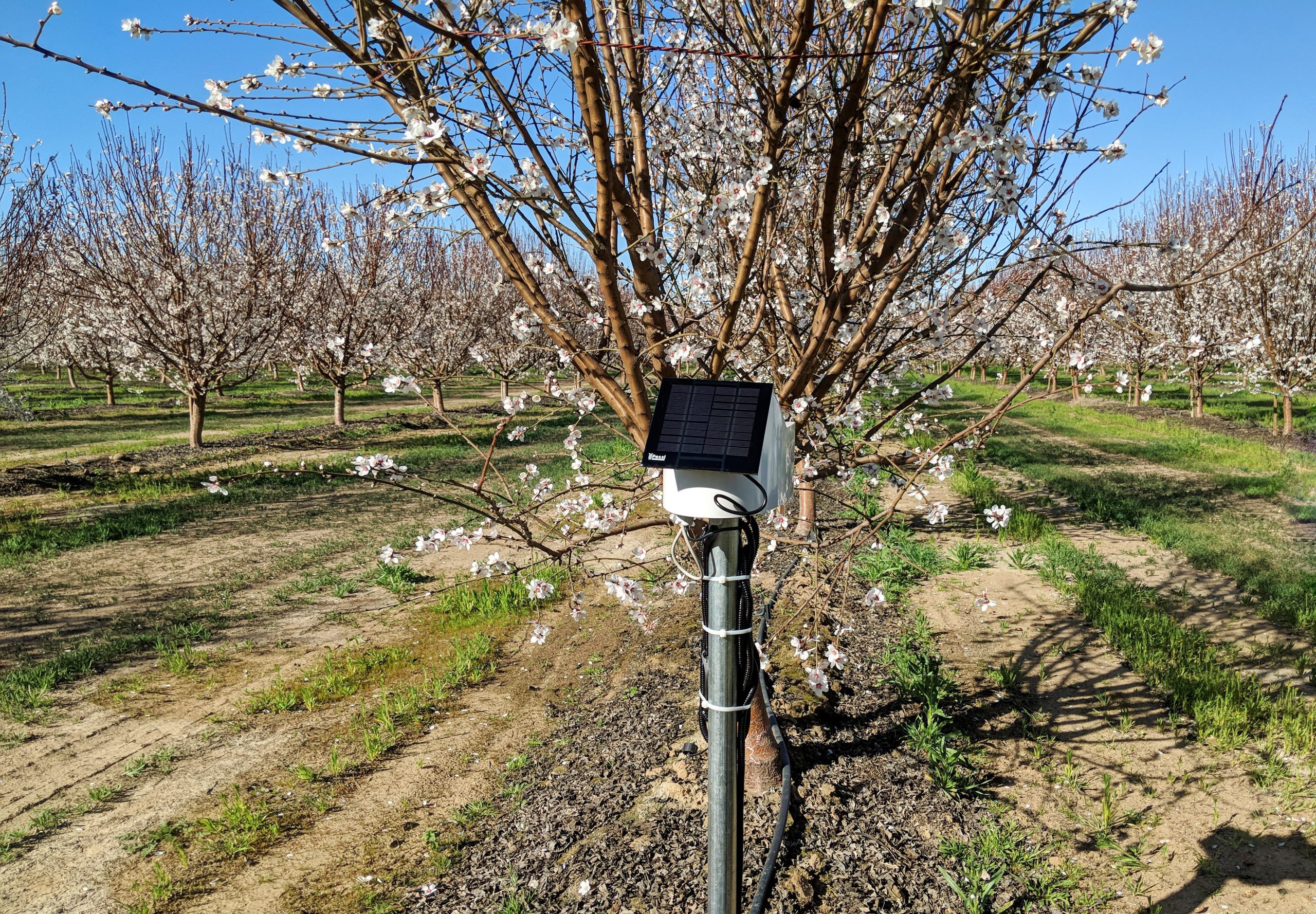
Disease models
The most important disease in cherries is brown rot, caused by the fungal pathogen Monilia laxa. Another important disease, also occurring by high moisture conditions is the disease shot hole, caused by the fungal pathogen Wilsonmyces carpophilu and the disease of cherry leaf spot, caused by Blumeriella jaapii.
Brown rot
Brown rot, caused by Monilia spp. (Monilia laxa, Monilia fructigena and Monilia fructicola) is among the most destructive diseases of stone fruits throughout Europe. Symptoms of brown rot disease are the blight of the cherry blossom as well as the green tip of twigs due to the penetration of the pathogen into the open blossom through the stigma of pistils or anthers.
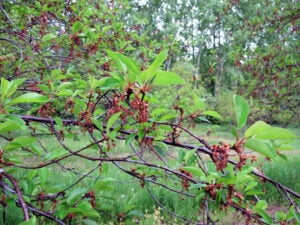
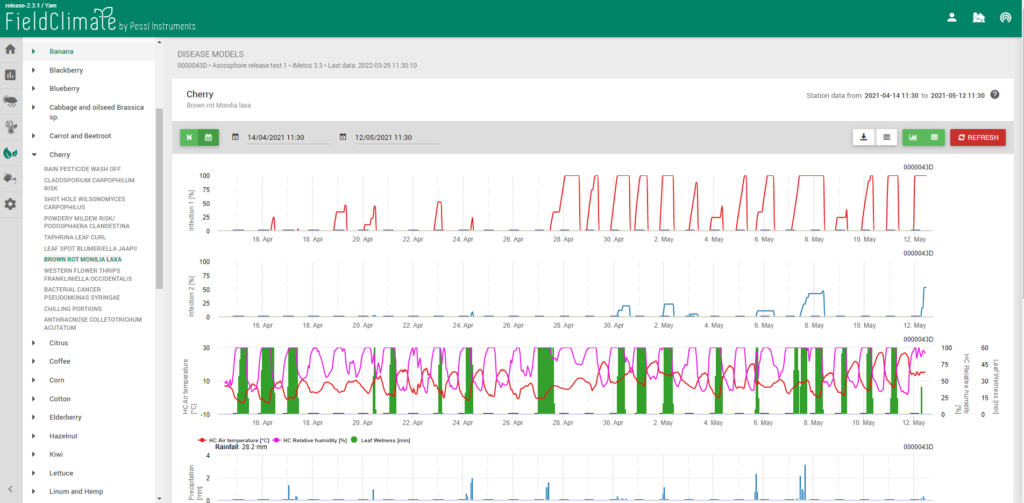
Shot hole
Shot hole is caused by the fungal pathogen Wilsonmyces carpophilu and it infects the leaves, twigs and fruits. Infected leaves show small brown spots with reddish margins which expand to larger circular lesions. These spots dry and fall out of the leaf, giving a shothole appearance. In severe cases premature defoliation of the tree may result.
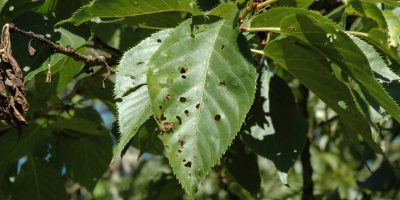

Leaf spot
Cherry leaf spot is caused by the fungus Blumeriella jaapii. The disease reduces flowering and weakens the tree. Leaves show small purple to brown spots with definite boundaries in early summer. The leaves turn yellow and fall.

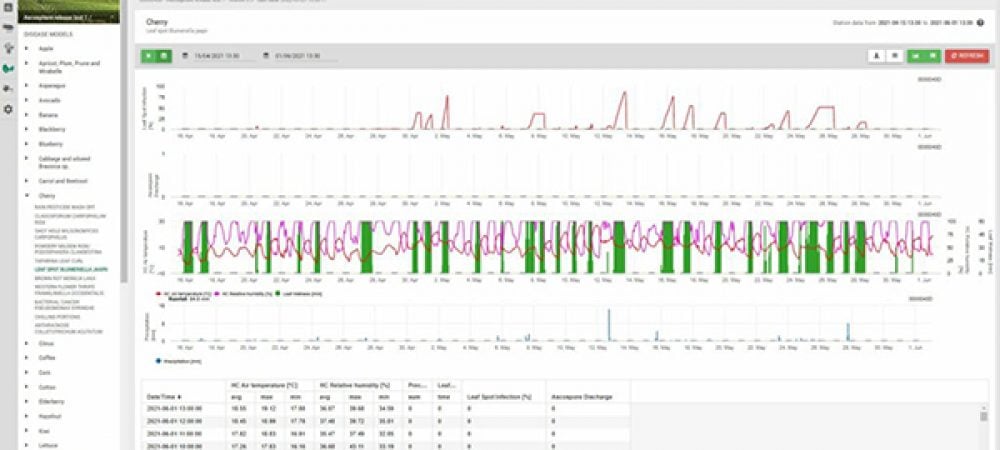
Cherry orchard management
A cherry LCA study “from farm to market” has been conducted to analyze the influence of orchard cultural practices on the environmental impact in terms of four parameters – energy, water, air and soil. Its results show that the use of agriculture and precision systems to predict the need for fertilizers (nutrients), herbicides and fungicides and the use of decision support systems to define the dates of cultural practices are the best and sustainable solutions for orchard management (Gaspar, Godina and Barrau, 2021).
For successful management of the cherry orchard specific stations and sensors are needed. IMT300 weather station with soil moisture sensor is a perfect solution for environmental monitoring, disease models, water management and more. It is powered by a rechargeable battery and a solar panel. But most importantly, it has the possibility to connect to more than 600 different sensors, although the minimum sensor set needed for cherry disease model calculations includes sensors for:
- precipitation,
- air temperature and relative humidity,
- global radiation,
- ultrasonic wind speed and direction,
- leaf wetness and
- soil moisture.
Together with disease models they are everything you need to keep an eye on your cherry orchard as the efficiency of the disease models also brings resources savings (at least 20 %) and guarantees the quality of the harvest.
Eager to know more?
Read more about cherry disease models and how to find the correct solution to your cherry-growing problems.
Literature:
Adeyemi, O., Grove, I., Peets, S. and Norton, T. (2017). Advanced Monitoring and Management Systems for Improving Sustainability in Precision Irrigation. Sustainability, 9(3), 353. https://doi.org/10.3390/su9030353
Darbyshire, R., Navas Lopez, J., Song, X., Wenden, B. and Close, D. (2020). Modelling cherry full bloom using ‘space-for-time’ across climatically diverse growing environments. Agricultural and Forest Meteorology, 284, 107901. https://doi.org/10.1016/j.agrformet.2020.107901
Gaspar, P. D., Godina, R. and Barrau, R. (2021). Influence of Orchard Cultural Practices during the Productive Process of Cherries through Life Cycle Assessment. Processes, 9(6), 1065. https://doi.org/10.3390/pr9061065
Proietti, S., Moscatello, S., Villani, F., Mecucci, F., Walker, R. P., Famiani, F. and Battistelli, A. (2019). Quality and Nutritional Compounds of Prunus Cerasus L. Var. Austera Fruit Grown in Central Italy. HortScience, 54(6). https://doi.org/10.21273/HORTSCI13960-19
Ross, K., Neilsen, G. and Neilsen, D. (2018). The Effect of Irrigation Frequency, Phosphorus Fertigation, and Cultivar on Levels of Phenolic Compounds in Sweet Cherries. HortScience, 53(10). https://doi.org/10.21273/HORTSCI13303-18
Stéger-Máté, M. (2012). Sweet and tart cherries, p. 433–446. In: N.K. Sinha, J.S. Sidhu, J. Barta, J.S.B. Wu, and M.P. Cano (eds.). Handbook of fruits and fruit processing. 2nd ed. Wiley-Blackwell.

